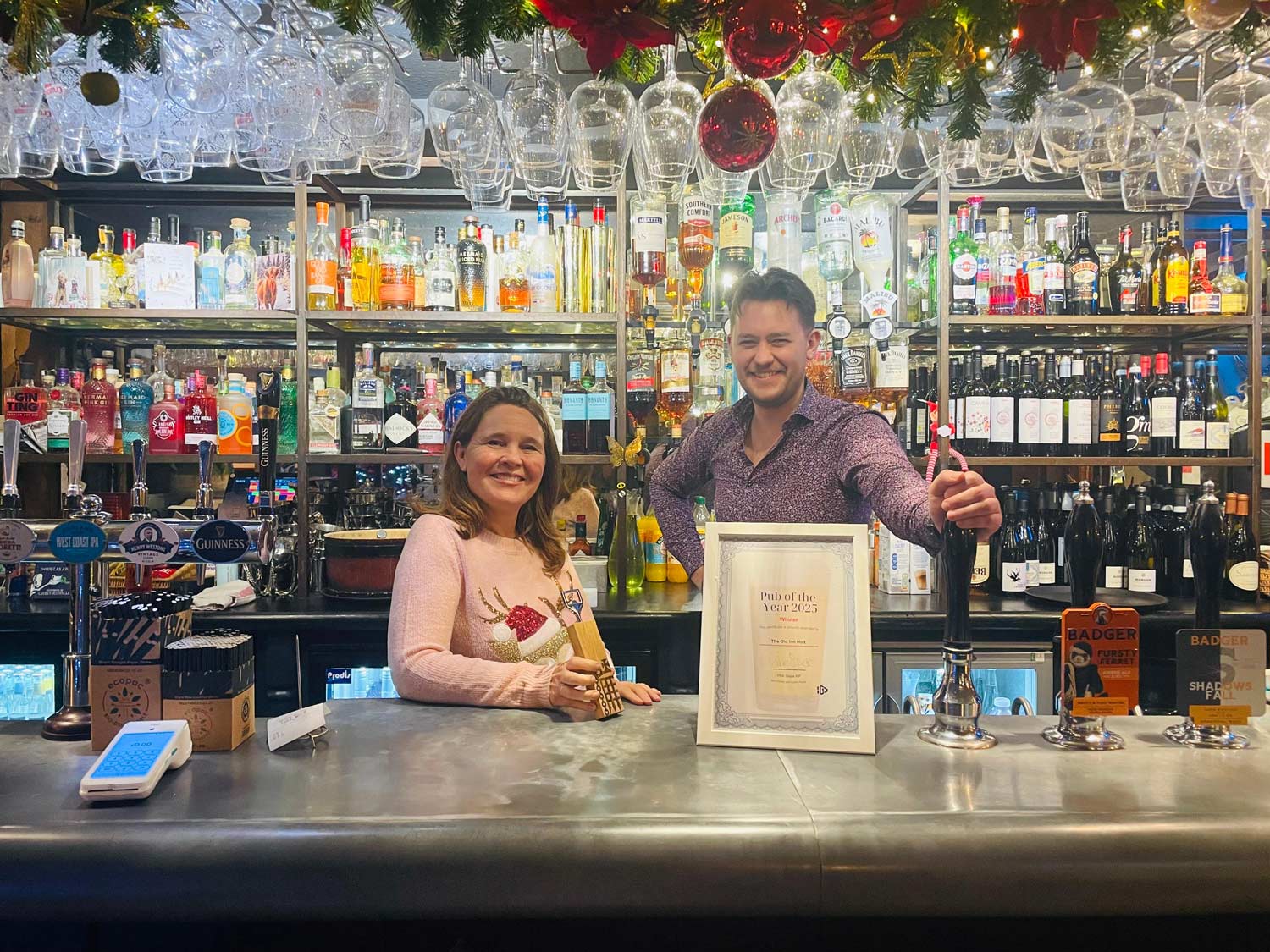Culture, History | Posted on April 9th, 2024 | return to news
Anglo-Saxon artefact conserved at Breamore church
A rare and hidden Anglo-Saxon ‘rood’ contained within a ‘Middle Age virtual reality box’ has been conserved at St Mary’s Church.

An Anglo Saxon cross at St Mary’s Church in Breamore has been conserved.
The rare and hidden ‘rood’ is contained within a ‘Middle Age virtual reality box’.
Dr Miriam Gill, a scholar with expertise on late mediaeval wall paintings, has written a report on the imagery and described it as a ‘significant and important’ work of art.
She said that at the time of its creation depictions of the suffering of Christ were only starting to appear, so the ‘violence’ was new to worshippers.
Her input has increased the knowledge of the11th century life-size bas-relief that shows Christ crucified with Mary and John on either side.
It is contained inside a hidden ‘loft’ chapel above the porch and is illuminated from a window opposite.
The rood – an old word for cross – and associated later paintings are on the upper walls of the south porch because in the Middle Ages that room was used as a chapel.
Worshippers stood on the same level as the imagery, magnifying its presence considerably.
The rood and wall paintings are largely unknown because of the church’s rural location and the artwork’s hidden position.
Expert conservator Peter Martindale spent a month on the project, securing flaking paint and areas of detached plaster, removing microbiological growth and filling cracks.
Originally displayed within the church, the ‘rood’ was moved in the 14th or 15th centuries to its current position.
The other walls were then painted and the images included a depiction of Judas hanging from a tree, and drops of blood.
The small, enclosed space enabled people to contemplate Christ’s suffering and perhaps their own mortality in a charged religious atmosphere.
Its hidden location did not protect the rood and in the 16th century it was defaced, but the figures remain and Christ can be seen in pain on the cross.
Dr Gill said: “This is extraordinary – a significant and important work of art, with extra resonance at Easter.
“Before the 10th and 11th centuries you didn’t get many realistic depictions of Christ’s suffering, and this rood comes from the time when people are starting to depict the violence.
“When it was moved from the church to the porch it was already hundreds of years old and it was then given a new scheme all around it – it was refurbished.
“The cross was given an elaborate landscape and countryside setting with trees, hills and distant buildings.
“The rood was likely defaced after 1547 when orders came down to destroy things like this because they were considered religiously wrong during the Reformation.
“This porch chapel remains an immersive and transportive experience which uses art to strengthen and generate religious experiences.”
Peter Martindale said: “When I first climbed up into the porch, with a scaffold platform at the level of the medieval floor, I had a sense of what those people 600 years ago felt within the chapel.
“It would have been an incredible religious space and was like nothing I’ve felt before – it must have been like a mediaeval virtual reality box.
“After the rood was moved to the porch – a huge task – the other walls were painted and included a depiction of Judas and sacred monograms.
“Dozens of drops of fictive blood, a reminder of Christ’s passion, adorn the walls, and there is a fascinating trace of painted text.
“The purpose of these vivid depictions would have been created to aid contemplation of Christ’s suffering and his ultimate gift to us all.
“The figures were carved from limestone then painted in bright colours which are something that we don’t usually associate with our churches today.
“To work on something almost 1,000 years old, which has such a history, is a great privilege. It had been conserved in 1980, but required some more work to keep it stable.”
The careful conservation measures will ensure its survival for many more years.
Andy Finch, church warden, said: “It is an astonishing survivor, a leap back to the Christianity practised in the church a thousand years ago.
“We feel that it is our responsibility to ensure this Anglo-Saxon rood is there for the next generation.
“It is a unique work of art and something that has been greatly revered along with the other Anglo-Saxon features and detail that we have.”
St Mary’s was built under Ethelred II The Unready and is an extremely rare ‘tuniform’ church, built around a central tower.
It has a number of rare Saxon features including an inscription above a door that reads ‘HER SWUTELATH SEO GECWYDRAEDNES THE’ – which translates as ‘here the covenant is manifested to thee.
Please share post:
LATEST NEWS:
CHARITY OF THE YEAR

Subscribe to the online magazine news letter







